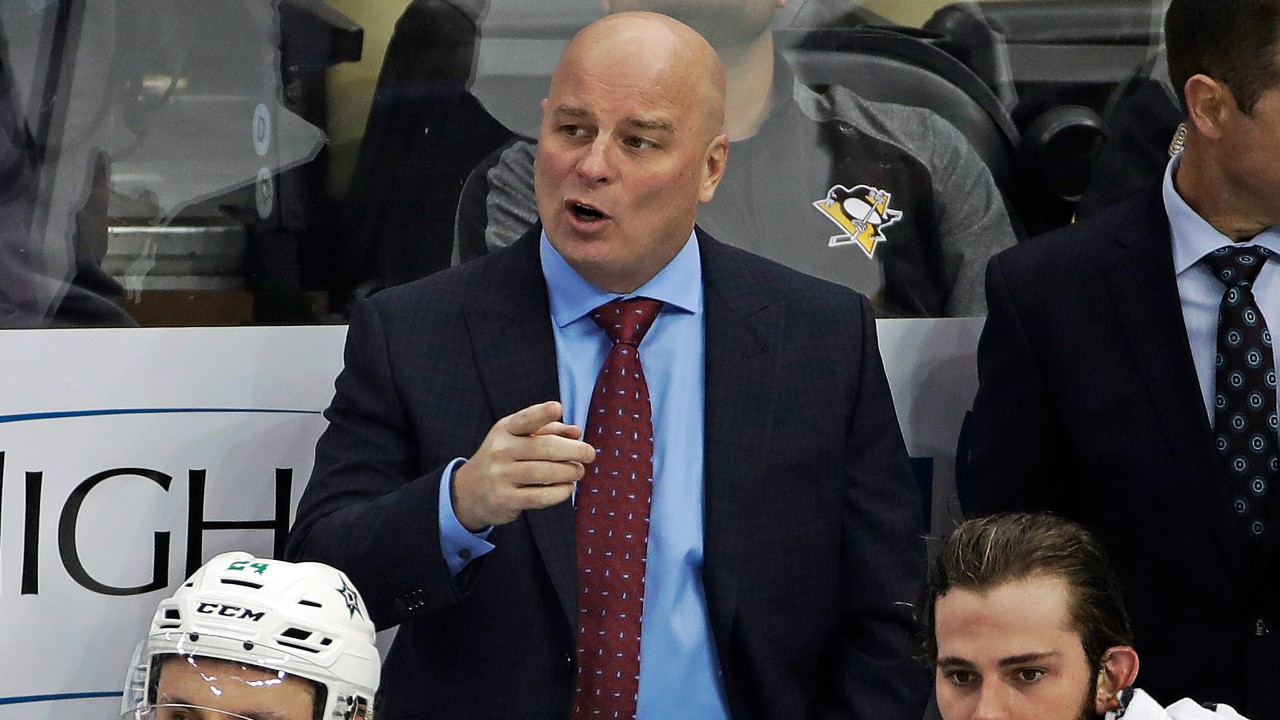As the decade winds to a close, the league enters a new era.
The few years that preceded the 2010s planted a seed, bringing a novel style to the game. And the young guns whose careers started amid that wave took it and ran with it, leaving behind the first inklings of a version of NHL hockey we’d never seen — one featuring boundary-pushing speed, limitless creativity, and a set of rules willing and able to unleash that skill.
It was over the past decade that this vision of what the game could look like truly flourished. And it was the centremen carrying the brunt of that transition, as has always been the case through the history of the game, directing the flow of play and the flow of the sport’s growth simultaneously. In doing so, they cemented their place in NHL history, those young league leaders in Pittsburgh and Chicago and Boston transitioning from superstars to potential Hall of Famers.
But now the next wave of game-changers are taking over. The McDavids and MacKinnons have already begun their ascent, combining that newly-established offensive flair with endless horsepower, hinting at the high-octane decade to come.
That said, before we turn the page on this past 10-year stretch and officially hand the keys off to the next generation, it’s worth looking back on what the game’s best accomplished over that span — the dynastic runs, the triumphant returns from injury, the long-awaited coups for the Stanley Cup throne.
With the list of the 2010s’ most influential centremen reading like the seating arrangement for the NHL Awards’ VIP table, let’s take a look back at who had the greatest impact from the middle of the ice over the past decade:
[snippet id=4167285]
1. Sidney Crosby, Pittsburgh Penguins
Even if we strip back the stipulations for these rankings, away from centremen alone, maybe away from hockey players alone, Sidney Crosby’s decade of dominance would still reign supreme.
Forget about how No. 87 evolved from being an offensive dynamo to one of the most complete players the sport has ever seen, or how he’s subtly altered the way elite NHLers function as pros. Forget about how he withstood career-threatening injuries to silence the doubters that for years said the Penguins wouldn’t win again with Nos. 87 and 71 at the helm.
Forget all that, and just look to the numbers.
The beginning of the 2010s saw Cole Harbour’s favourite son stalled by injury, sidelined for a total of 147 games over the decade’s opening three seasons. And yet, even with that time away, Crosby still finished as the highest-scoring centreman of the decade, amassing 788 points over 630 games from Jan. 1, 2010 on.
A quick run-through of his trophy haul over that span: One Hart Trophy as league MVP as voted by the PHWA, two Ted Lindsay Awards as MVP in his fellow players’ eyes, one Art Ross Trophy as the top scorer in the game and one Rocket Richard Trophy as the league’s top sniper. And, of course, two (more) Stanley Cups — captaining the first back-to-back winners in nearly two decades — and a Conn Smythe Trophy as playoff MVP to go with each of those two rings.
As good as Crosby was in his first few seasons in the league — a stretch that hauled in one more Hart, Ted Lindsay, Art Ross, Rocket Richard and Cup — the 2010s marked Crosby’s true ascent to an all-timer. And with another Hart Trophy nomination just last season, and a climb to fourth in Selke Trophy voting, it’s not clear the one they called The Kid is finished dominating the league just yet.

2. Connor McDavid, Edmonton Oilers
Connor McDavid’s career throws the biggest wrench into any look at the past decade of NHL greats.
The 22-year-old’s only been in the big leagues for half of that 10-year stretch, so how could he top the slew of veteran game changers who were in the mix for all 10? Simply put, what he’s done over that five-year stretch outweighs what most players in the game have accomplished in double or triple that time.
Let’s get the obvious out of the way: Since navigating his injury-plagued rookie campaign, McDavid has emerged as the most otherworldly, unstoppable, uncontainable, indomitable offensive force in the league.
His first full NHL campaign brought a Hart Trophy, Ted Lindsay Award and Art Ross Trophy. That age-old sophomore slump sapped McDavid of his Hart in Year 2, leaving him with only another Art Ross and Ted Lindsay Award for his troubles.
But aside from the hardware haul, it’s what McDavid did for the game overall that leaves him as the second-most impactful pivot of the 2010s.
The league’s been in transition since the lockout that preceded the arrival of the name one spot up on this list. It’s slowly leaned more and more towards breakneck speed, dynamic offensive creativity, and the type of flashy shows of skill that once seemed a rare occurrence at this level. Then came No. 97.
It was like he was created in a lab, given the proper doses of each of these new-school elements, the result a scoring force like none we’ve ever seen. The foot-speed is mad, the quick hands just as lethal, and the vision and playmaking ability the perfect engine to drive the whole machine. The league’s only seen a centre top 100 points 11 times over the past decade — the Oilers’ captain accounts for three of those, doing it every time he’s played enough games to have the chance.
McDavid’s already changed what offence looks like in the NHL, and as we saw from Crosby’s career trajectory, there’s a better-than-fair chance he’s just getting started.

3. Evgeni Malkin, Pittsburgh Penguins
Plenty have forgotten what exactly Penguins hockey looked like in all those years that came between the team’s ’09 Cup and their back-to-back runs — years of injuries and doubt thrown at ever marquee name in black and gold.
Climbing back into the league’s upper echelon required not just Crosby’s best but Evgeni Malkin’s too.
That was most clear during the early years of the past decade, with No. 87 on the shelf as injuries threatened to rob him of his Hall-of-Fame career. In his absence, Malkin put the team on his back, particularly in 2011-12, wherein Geno put up 50 goals, 109 points, and hauled in a Hart Trophy, a Ted Lindsay Award, and his second career Art Ross.
The culmination of Pittsburgh’s other future Hall of Famer raising his game, and Crosby eventually returning to do what he does best, saw the Russian phenom earn his second and third career Stanley Cup rings during the 2010s. And while it was Crosby claiming the Conn Smythe nod this time around — after Malkin claimed the playoff MVP honours during the Penguins championship run that just preceded the decade — No. 71’s impact on said runs was undeniable.
He led the club in post-season scoring during the second of those back-to-back runs, putting up 28 over the 25 games required to claim the Cup. In the season following that second run, with most of the Penguins reeling from two straight lengthy playoff treks, it was Malkin who held the team afloat, putting up one of the best seasons of his career — a 42-goal, 98-point effort.
All in all, he finishes as the sixth-highest regular-season scorer of the decade, and the second-highest post-season scorer. But that regular season sum also comes with Geno having missed a fair amount of time battling through injuries in recent years. Looking to which centres had the greatest offensive impact relative to the time they were actually able to spend on the ice, Malkin finished third among all other NHL pivots, his 1.15 points-per-game pace bested only by Crosby and McDavid.

4. Jonathan Toews, Chicago Blackhawks
Much has been written about the mythos of Jonathan Toews, about the “intangibles” that vaulted him from great to elite. But even if you chip away at the legacy by pointing out the number of all-stars on the teams he won with, it’s still tough discount the whole enterprise altogether.
The Winnipeg, Man., native captained his Blackhawks to three championships over the past decade, lifting Chicago from being the owner of an infamous championship drought to being mentioned in the same breath as genuine dynasties.
And though Toews wasn’t as offensively prolific as teammate Patrick Kane, the captain wasn’t exactly a passenger, having won the Conn Smythe for the first of those three ring-clinching runs.
He did work in the regular season, too, emerging among the top two-way players in the game with a 2013 Selke Trophy and three other trips to the NHL Awards as a finalist for the defensive prize.
Even with that two-way mindset, Toews racked up the 10th-most points among NHL centres over the past 10 years, putting up 623 in 729 games. Strip that down to even-strength points, and only four pivots outscored Toews. Only one centre won more faceoffs than the Blackhawks captain. Only one scored more game-winners.
Though he wasn’t the most lethal scorer or the most stifling two-way talent over the course of the 2010s, Toews excelled enough in every aspect of his skill-set to make himself supremely valuable in every facet of the game — power play, even strength, penalty kill, protecting the lead, clawing back.
Regardless of the situation, No. 19 was sent over the boards, coming out on the right end of things more often than not — and his club snagged three rings because of it.

5. Patrice Bergeron, Boston Bruins
While the three forwards above Toews on these rankings help illustrate why he wasn’t the best offensively, it’s No. 37 in black and gold that robbed Toews of the crown as the game’s premier two-way force.
That distinction rests with Patrice Bergeron, who used the 2010s to not only become the unequivocal best when it comes to defensive skill from middle of the ice, but perhaps one of the best two-way players to ever take the ice in the NHL.
The Boston Bruins centre-ice stalwart claimed four Selke Trophy wins in 2012, 2014, 2015 and 2017 while becoming the top faceoff practioner in the game. But even that doesn’t tell the full story of Bergeron’s two-way ability — all told, he’s been a Selke finalist every year for the past eight seasons.
Only one other player in history earned as many Selke nods as Bergeron since the award came into the picture in the ’70s, as Bob Gainey claimed the first four straight during his Montreal Canadiens days. One more win, and Bergeron will claim the throne as the Selke king, and given his near-decade-long run of nominations, it’s far from out of the question.
Don’t forget, it was a decade of resurgence for No. 37, too. After suffering a devastating head injury in 2007 that took years to fully recover from, Bergeron flourished during the 2010s.
He claimed his first Stanley Cup in 2011, posting 20 points through 23 post-season games during the club’s championship march. And he’s simply gotten better with age, posting a career-high 79 points just last season while guiding his club to another crack at the Cup. A fitting end to the decade for one of the premier talents and teams in the game.

[relatedlinks]








